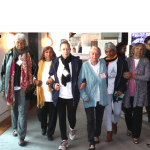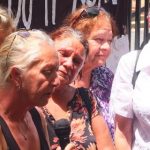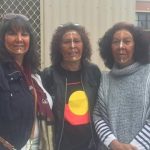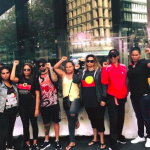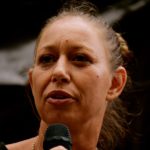Preventing Evictions: An Interview With The First Nations Homelessness Project’s Jennifer Kaeshagen
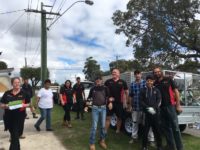
Western Australia has the highest rate of public housing evictions in the country. Over the period July 2016 to April 2018, 1,242 households were ordered to vacate their public housing property, with extreme poverty being the major driver behind these evictions.
And like so many policies that negatively affect disadvantaged sections of the community, First Nations people are disproportionately represented amongst the households being impacted. Indeed, around half of these public housing evictions involve Aboriginal families and individuals.
The whole premise behind public housing is that the government provides affordable places to live for those on low income, who are most in need. So, being evicted under such circumstances means that the prospect of ending up on the street is high.
A 2018 WA University Centre for Social Impact report found that 31 percent of people experiencing homelessness in WA are First Nations peoples. And this is while Aboriginal and Torres Strait Islander people only account for 3.1 percent of the state’s overall population.
The continuing stolen generations
Families that are evicted from public housing, also face the very real prospect of having their children removed. And Indigenous families in these circumstances can often already be dealing with the intergenerational trauma that’s resulted from the policies of the Stolen Generations.
The 2019 Productivity Commission report reveals that on 30 June last year there were 2,452 First Nations children in out-of-home care in Western Australia. And this accounted for 55 percent of the total amount of kids who’d been removed from their families by the WA government.
As the Bringing Them Home report sets out, a child who’s been forcibly removed from their family has an increased likelihood of getting caught up in the criminal justice system, suffering from a mental health issue or contemplating suicide.
Closing the Gap
Established in 2015, The First Nations Homelessness Project (FNHP) is a Perth-based service that provides advocacy and throughcare support to Aboriginal and Torres Strait Islander families at risk of being evicted or having a child removed.
A branch of the Ngalla Maya Aboriginal Corporation, the FNHP has reduced public housing evictions of First Nations families in the Perth region by about 30 percent over its time in operation. Initially, a purely volunteer-based program, the project has received federal funding since October 2017.
FNHP director Jennifer Kaeshagen is the founder of the project. She coordinates teams who attend the homes of at-risk families to help them maintain their properties, and in turn avoid eviction. According to Kaeshagen, the project is all about helping to close the gap.
Sydney Criminal Lawyers spoke to Jennifer Kaeshagen about the FNHP eviction prevention process, why government claims disruptive behaviour is behind a majority of public housing evictions is misleading, and the outcomes that the project has resulted in.
Firstly, the FNHP has been providing services to prevent First Nations families from being evicted, or having their children removed. Ms Kaeshagen, how much of a need for the project is there in Perth?
In the last financial year, there were 512 evictions. So, there’s a huge, unmet need.
Your organisation operates on a premise that most of these evictions could be avoided. This indicates that without your independent project intervening, the system in its current state is lacking. How does FNHP make a difference?
We practice radical empathy. And we’re entirely outreach. So, we’re not office based. We’re with families in their homes, on their turf and on their terms.
We spread the love. We care about our clients. And we’re personally invested in seeing them avoid traumatic experiences like homelessness and child removals.
How does the FNHP team practically go about helping families remain in their homes?
Ordinarily, we start off with an eviction prevention busy bee. We bring in a team of around eight Noongar workers to support the family with property standard issues. There are very few families out of the 181 on our books, where property standards weren’t an issue with the Department of Housing.
So, we do a busy bee with team support. And it’s a get to know you and a positive beginning. Then following the busy bee, an outreach worker responds to each family. They continue to visit the household depending on a needs basis. And they build a supportive and positive relationship.
The worker talks with the family about whatever issues have led to them receiving a termination notice. And then they support the family to work through those issues, so we can close the case eventually, feeling that they won’t end up in the same predicament again.
I understand that in WA you have the Disruptive Behaviour Management Policy, which is a three strikes within 12 months eviction policy for public housing tenants. What does this entail? And what’s its impact?
It’s a really draconian policy. It’s so over the top, because there’s so many things already in place to address problematic tenancy from Housing’s point of view.
I’ve got the auditor general’s report. And in terms of disruptive behaviour that leads to strikes there are three categories.
There’s basic disruptive behaviour, meaning loud noise. Then there’s serious, which means reckless behaviour. And then there’s dangerous, which is putting people around their tenancy and in their tenancy at risk.
Basic disruptive behaviour makes up 81 percent of all strike complaints. Serious behaviour is 17 percent and dangerous makes up 2 percent. In terms of disruptive behaviour, the number of evictions resulting from it was only 0.2 percent of all properties. And most of the strikes were for disruptive behaviour, just being noisy.
So, we’re trying to push back on this at the moment, because the Department of Housing is saying that all evictions are because of serious disruptive behaviour. But, disruptive behaviour evictions have always been less than 10 percent of evictions.
What people have really been evicted for are arrears and property standards, because they can’t afford bins, or there’s been sorry time or trauma and the housework has gotten beyond them.
Is this a new policy?
No, it’s not a new policy. It’s been running over a number of years. And it’s incredibly draconian. There’s no sort of standards like this in private rentals. It is particularly discriminatory against vulnerable families.
I live in a street where I’m surrounded by mansions. If we had the disruptive behaviour strikes, all my wealthy neighbours would have been out on their ears by now.
This is a particular thing that Housing has politically applied to the most vulnerable people in Perth.
In NSW, there’s a significant issue around child removals, whereby the system disproportionately impacts First Nations families. What’s the situation like in WA? And what sort of impact does the removal of children have?
What we have here is pretty much the worst in the world in terms of First Nations child removals. The impact is absolutely horrendous. And it’s the same as the Stolen Generations in terms of impact and trauma.
We’re really trying to push back on Housing, which is claiming that all evictions are to do with serious disruptive behaviour, because we know people are being evicted left, right and centre for reasons related to poverty.
As soon as we get a termination notice from Housing that gets sent to Child Protection, because if you’re evicted into the street, you’re at a very significant risk of having your children removed.
The FNHP is a branch of the Ngalla Maya Aboriginal Corporation. Can you tell us a bit about what the corporation does?
We’re a project of Ngalla Maya. It runs three projects. The main one is prison-to-work training and employment. They’ve set a national record in terms of the number of successful completions of training and uptake of jobs. And they also run an on-country camp for kids.
And if members of the community would like to lend support to FNHP, how do they go about doing that?
We used to be entirely volunteer. We went a couple of years where it was all volunteers. But, we’ve got some federal funding now. And what we do now is pay Noongar workers.
So, in terms of supporting us, it’s best to just spread the word that we’re here if anyone needs us.
And lastly, Ms Kaeshagen, the FNHP has been operating for the last four years. What’s your impact been like so far? And how do you see this evolving into the future?
We’ve got 181 families on our books. And we’ve had only seven evictions in that time. In terms of the amount of children not made homeless, you could times 181 by the average number of kids, which is three.
So, it’s had a huge impact. And we hope to just continue on.


